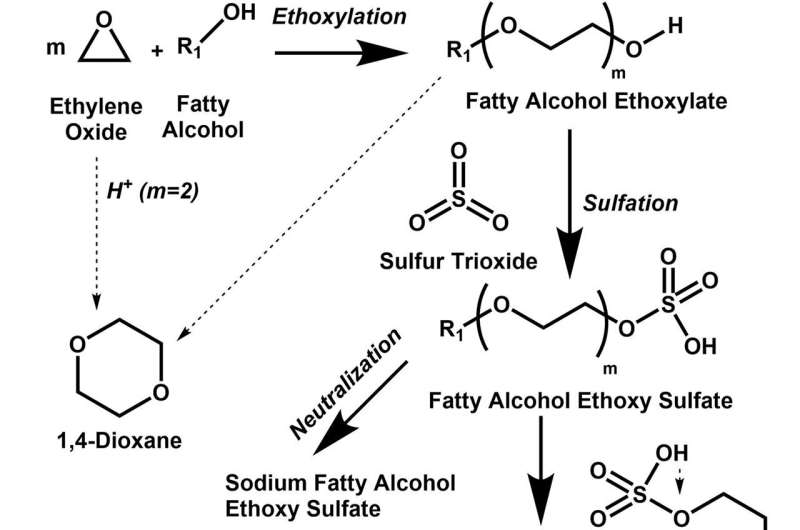Recommended analytical methods for detecting 1,4-dioxane in commercial products
Researchers supported by the American Cleaning Institute have released recommendations concerning the detection and quantification of 1,4-dioxane in commercially available products, including household cleaners, personal care products, and cosmetics.
1,4-dioxane, a by-product formed in the manufacturing of ethoxylated surfactants, particularly phosphorylated or sulfated ethoxylates, is toxic and can persist in surface or drinking water for years. As a potential human carcinogen, its presence in our water system is of particular concern and has prompted increased regulatory focus with a new law passed in the U.S. state of New York that limits the concentration of 1,4-dioxane in household cleaning and personal care products to 2 ppm and 10 ppm for cosmetics as of December 31, 2022.
Further limits will be imposed on household cleaning and personal care products as of December 31, 2023, when the limit will be reduced to 1 ppm. California is considering similar legislation.
A documented method for the robust, long-term assessment of 1,4-dioxane levels in commercial products is critical for manufacturers to meet the pending requirements presented by new regulations.
This review published in the Journal of Surfactants and Detergents assesses the methodologies used to quantify 1,4-dioxane in surface and drinking water, then extends the assessment to commercially available products. The authors make recommendations for the best approach to quantify concentrations and identify ways manufacturers can adjust formulations to reduce the amount of 1,4-dioxane in products.
More information: Douglas G. Hayes et al, Precise measurement of 1, 4‐dioxane concentration in cleaning products: A review of the current state‐of‐the‐art, Journal of Surfactants and Detergents (2022). DOI: 10.1002/jsde.12633
Provided by American Oil Chemist's Society





















